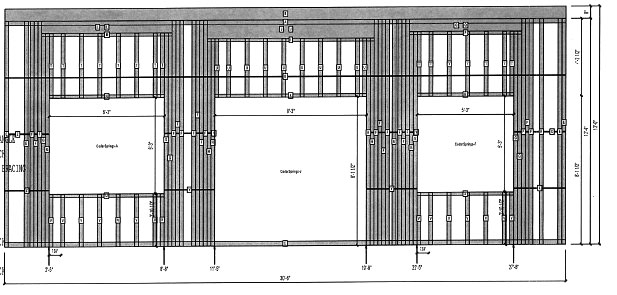

In 2012, the manufacturing tolerance values were extended to the flange width and stiffening lip length. These tolerances were replicated in AISI S200 in 2012 and are now included in AISI S240. This limitation has been eliminated from AISI S240 however, it should be remembered that 118 mils is still the maximum thickness of standard products in the United States and 97 mils (0.0966 inches or 2.454 mm) is still the maximum thickness of standard products in Canada.ĪSTM C955 has historically stipulated manufacturing tolerances for cold-formed steel structural framing members. The previous design standards limited their application to framing members having a maximum base steel thickness to 118 mils (0.1180 inches or 2.997 mm).
STANDARD FOR COLD FORMED STEEL FRAMING FREE
These cold-formed steel framing standards are available as free downloads at Table 2.

STANDARD FOR COLD FORMED STEEL FRAMING CODE
Additionally, the North American Standard for Cold-Formed Steel Framing – Product Data, AISI S201, provides criteria for standardized products, AISI S202 serves as the industry code of standard practice, and AISI S230 provides a prescriptive method for one- and two-family dwellings.


For nonstructural member design, AISI S220 governs the design (see STRUCTURE, February 2013) and when specific seismic detailing is required, AISI S400, North American Standard for Seismic Design of Cold-Formed Steel Structural Systems, is the applicable framing design standard. This article focuses on AISI S240 which applies to cold-formed steel structural members subject to gravity loading, wind loading, and seismic loading, except when specific seismic detailing is required. It should be noted that the newly developed and updated AISI framing standards refer to AISI S100-12 (10), not AISI S100-16, due to the sequencing of the documents in the standard development schedule. This new standard includes design provisions for wall systems, floor and roof systems, lateral force-resisting systems, as well as truss and header assemblies. The simple reason is, it was easier to develop small single-topic documents versus a more comprehensive multi-topic document.īut, in 2015, these six AISI cold-formed steel framing standards, AISI S200, S210, S211, S212, S213, and S214 (references 1 to 6), were consolidated into a comprehensive multi-topic standard, North American Standard for Cold-Formed Steel Structural Framing, AISI S240. But, why would AISI develop six discrete framing standards as opposed to one design manual? This has been an often asked question by framing design engineers. The other standards addressed such topics as a code of standard practice, the definition of standard product, and prescriptive design for residential applications. Six of these standards addressed the design of structural elements, such as general provisions, wall studs, floor joists, trusses, headers, and shear walls. From 2001 to 2012, the AISI Committee on Framing Standards developed nine different framing standards to cover specific aspects of cold-formed steel framing.


 0 kommentar(er)
0 kommentar(er)
